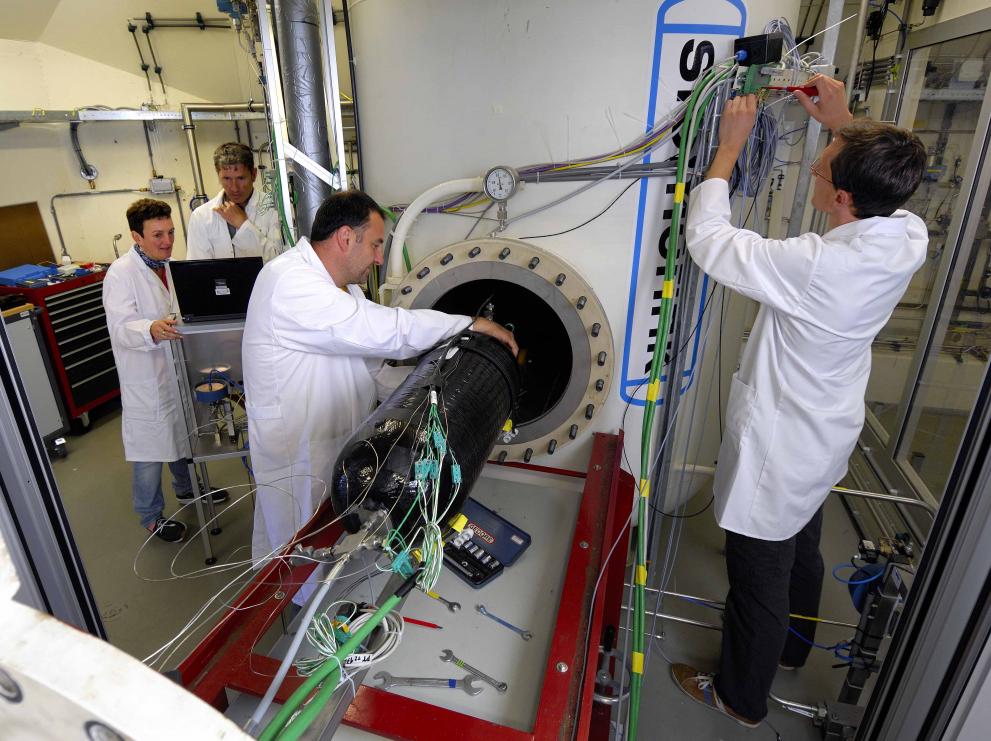The High Pressure Gas Testing Facility (GASTEF), located at the JRC's Petten site (the Netherlands) is one of the few facilities in Europe conducting research on on-board compressed gas storage systems.
The GASTEF facility is designed to perform tests on high pressure tanks for hydrogen (H2) or natural gas (CH4) storage according to the procedures prescribed by current type approval regulations.
Challenges of gas storage
Storage of gases under pressure, including hydrogen, is a rather well-known technique. However, there are several challenges related to the use of hydrogen in vehicles, as it is stored at pressures as high as 70 MPa.
Since 2011, commercial hydrogen vehicle tanks have been subjected in the GASTEF to hydrogen filling-emptying cycles to investigate their long-term mechanical and thermal behaviour and their safety performance with emphasis in:
- Refuelling of on-board tanks is a technological challenge; the fuelling has to be performed in a reasonable amount of time in order for the technology to be competitive with the current gasoline and diesel one in relation to the comfort of the users. In GASTEF, fast filling tests are aimed to study different refuelling conditions and their influence on both the refuelling station operating parameters and gas temperature inside the tank. Tests consist of temperature measurements of the gas inside the tank during filling under different ambient conditions, durations, hydrogen delivery temperature and states of charge.
- Long time performance and lifetime assessment, which are studied by means of Gas cycle test consisting of tank filling and emptying cycles, in which the tanks are filled up to their nominal working pressure and then emptied, for a number of cycles required to simulate their lifetime. Typical filling times range from 3 to 5 minutes, while the emptying period can extend up to one hour. Helium, hydrogen or natural gas can be used.
- Permeation test based on the measurement of gas leaks or permeation from the tank kept at its nominal working pressure for a long period of time (typically 100-500 hours). As for the gas cycle test, helium, hydrogen or natural gas can be used, but hydrogen is the one of major interest.
These tests simulate the service conditions that a tank of a typical hydrogen vehicle experiences during its operative life: a quick filling at the hydrogen refuelling station, an idle or parking period and a slow emptying due to hydrogen consumption during driving; all these repeated thousands of times for the vehicle lifetime.
Test standards
GASTEF is designed to perform these tests according to the European Regulation EU 406/2010 on type-approval of hydrogen vehicles and by other international regulations and standards such as UN Regulation No. 134 or ISO and SAE standards.
Open Access
Previous open access calls can be visited here.


